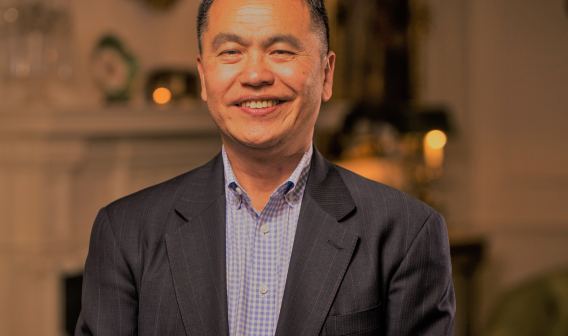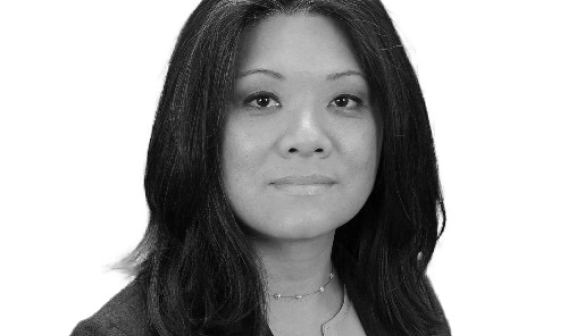Ihrie: It sounds like you’re talking about very broad-based functional teams — not just aerospace engineers, but a range of specialties. Any thoughts around how the ecosystem or how Virginia can support your evolving workforce needs going forward?
Lowell: We looked at this much as we look at developing an airplane. It’s clear that everybody who works on an airplane isn’t an aeronautical engineer, and everybody who’s going to work on some sort of quantum project doesn’t need to be a quantum physicist.
Almost every project team I have is multidisciplinary. I have no team that is entirely physicists. Maybe this is self-serving or a little biased, but my view is that our teams are better for it. We have people who are able to ask questions differently than a quantum physicist might ask and find things. Professional diversity really helps us do a better job developing products and not missing stuff because of biases that having all the same type of people working on a project brings to the solution. Having large interdisciplinary product teams is really how we drive our products to fruition.
We recently announced that we’re moving our headquarters to Virginia. But more important than that announcement was that we’re establishing a research and technology hub in the area. One of its focus areas will be quantum sciences, along with cybersecurity, autonomous operations, and software and systems engineering. The regional ecosystem in Northern Virginia is ideally suited to support these kinds of activities. There is a large population of people with advanced degrees and a large concentration of government research and development organizations. We’re confident the Virginia region has the talent we need to make that hub a success.
Ihrie: How do you see Boeing contributing to the larger ecosystem? What might be Boeing’s role in helping to grow and make that a positive feedback ecosystem?
Lowell: We do a number of different things. We serve on the Quantum Economic Development Consortium, which is helping build the national ecosystem of companies that work in this quantum space. We are working very heavily with the Potomac Quantum Innovation Center. It’s a collaboration of businesses, industry, and government in the Washington area trying to drive and guide development of quantum capabilities in the region.
We invest in regional university development. We see universities as key elements in developing people and talent, and also as places to incubate ideas.
We have a long history of working with small businesses and manufacturers to refine the products and services they provide to meet our specific requirements. We will continue that in the quantum technology space and be development partners with smaller companies, providing resources to specialize what they do to meet our requirements for devices or products where they’re different from what they produce ready-made for customers.
Ihrie: Are there any other ideas or topics you’d like to touch on?
Lowell: Something you had asked earlier was: How might quantum impact the average citizen’s everyday life? The place where I think more people will be impacted in a tangible way is in development of advanced medical sensors using quantum sensor technology. This is an area with substantial market need for advancements. It’s a product that the general public will see because we’re each medical patients at some point in our lives and likely to need those kinds of sensors.
An MRI is an early example of a quantum sensor. Advanced versions of MRIs, for instance, enable people to do functional brain scans without sitting in an MRI with a huge magnet around them. These sensors have an opportunity to profoundly impact people around the world by changing the cost of providing that kind of specialized sensing, as well as the quality of the data produced and the eventual medical outcome.
The other space I’m betting on is navigation. I think this is where quantum sensing provides very clear advantages and allows systems to be built that are both more accurate and more reliable over time. We as a company are very, very focused on this. In fact, we’re doing a flight test to demonstrate quantum navigation systems later this year.
Ihrie: How do you think about the interaction between artificial intelligence and quantum technologies, whether it’s autonomy or quantum computing or something else?
Lowell: Machine learning in the end is about building a model able to take some collection of data and predict how a new piece of data that comes in fits with the original set. You do that one of two ways. You either train a system — provide it lots and lots and lots of images of cats and humans and it finds the edge between those two categories by figuring out where the examples are and then draws the best line that demarcates cat from human — or you use other kinds of machine learning models that are called generative models. These models don’t tell the machine what the answer is. You have it look at the data and ask, “What can you learn about this? What conclusions can you derive from the data as it’s presented?” They seem to function a little bit more like a human brain.
To what extent can the introduction of quantum behaviors improve these generative models’ ability to discern categorization without it being presented to them? Early research indicates that quantum-like behavior seems to improve models’ ability to understand or to develop a categorization that makes sense without being told what the category is.
Ihrie: It’s going to be a fascinating few years, maybe decades, watching these technologies evolve. Thank you very much. I really appreciate your time and your insights.
Lowell: Thank you, David. It’s been a pleasure.
For the full interview, visit www.vedp.org/Podcasts






